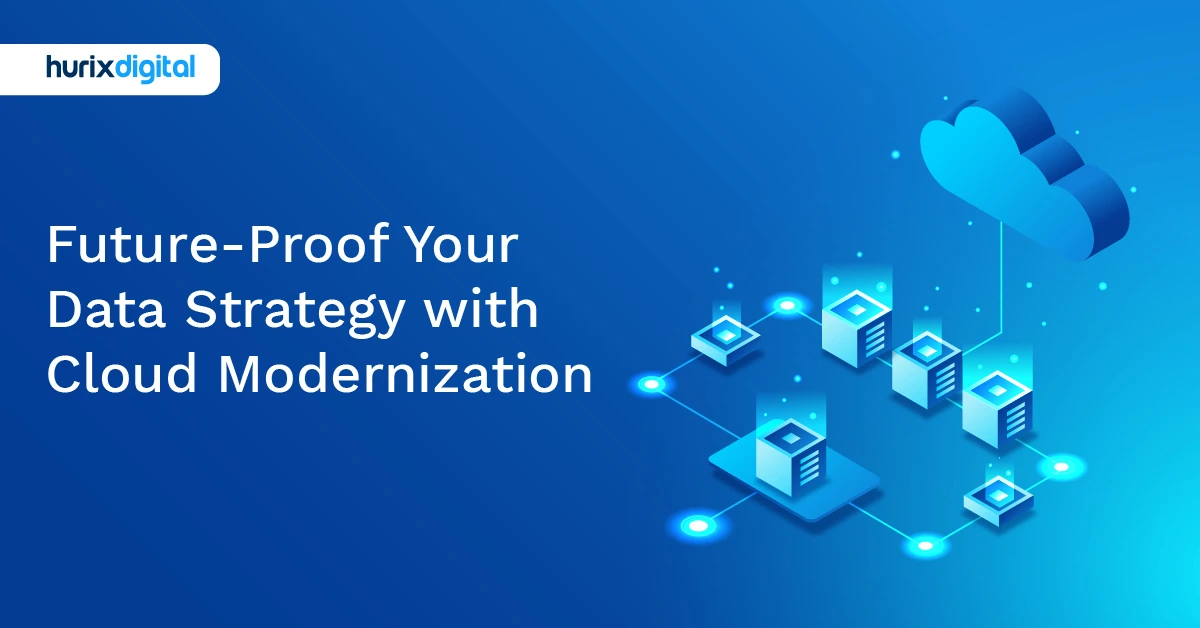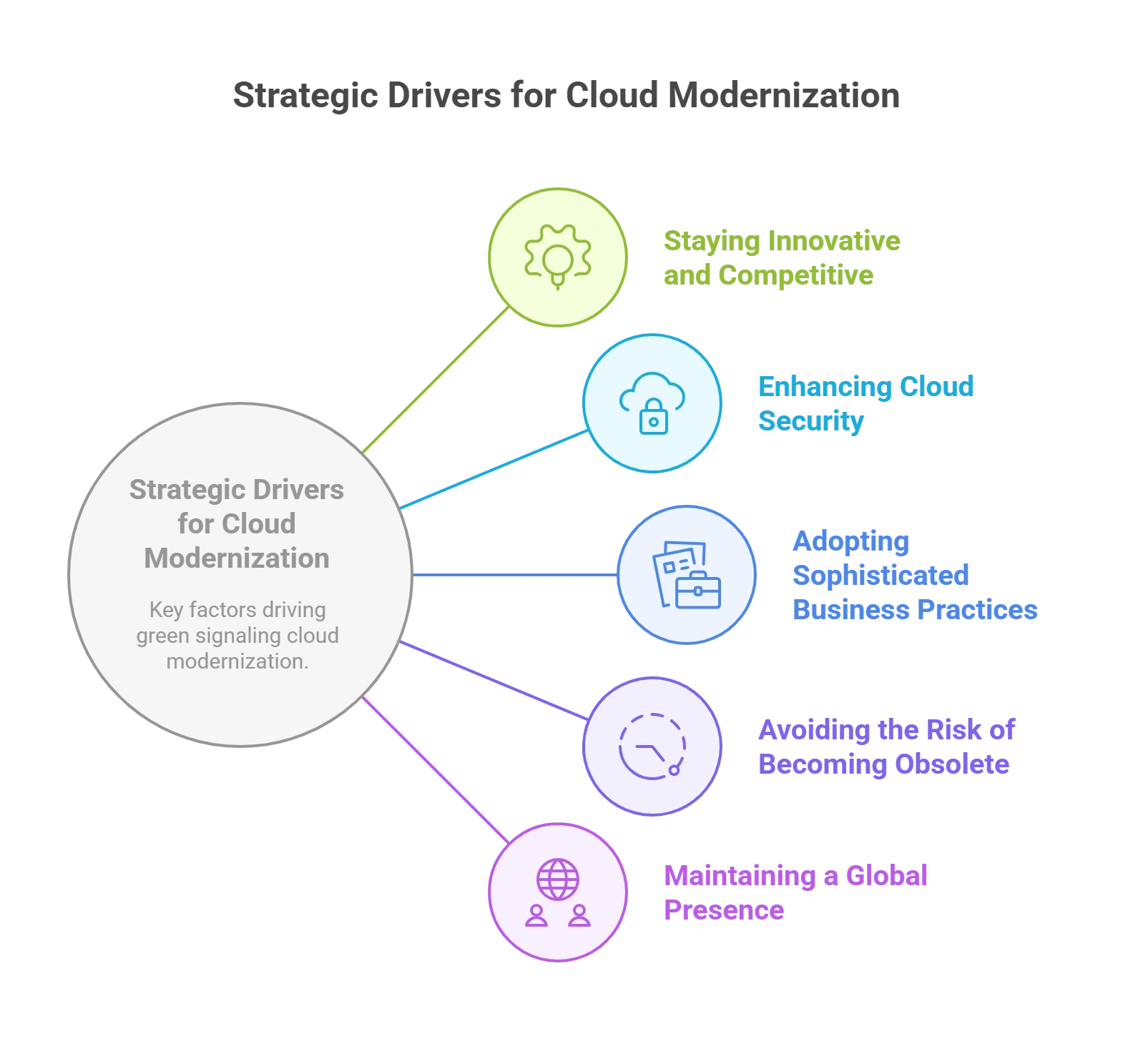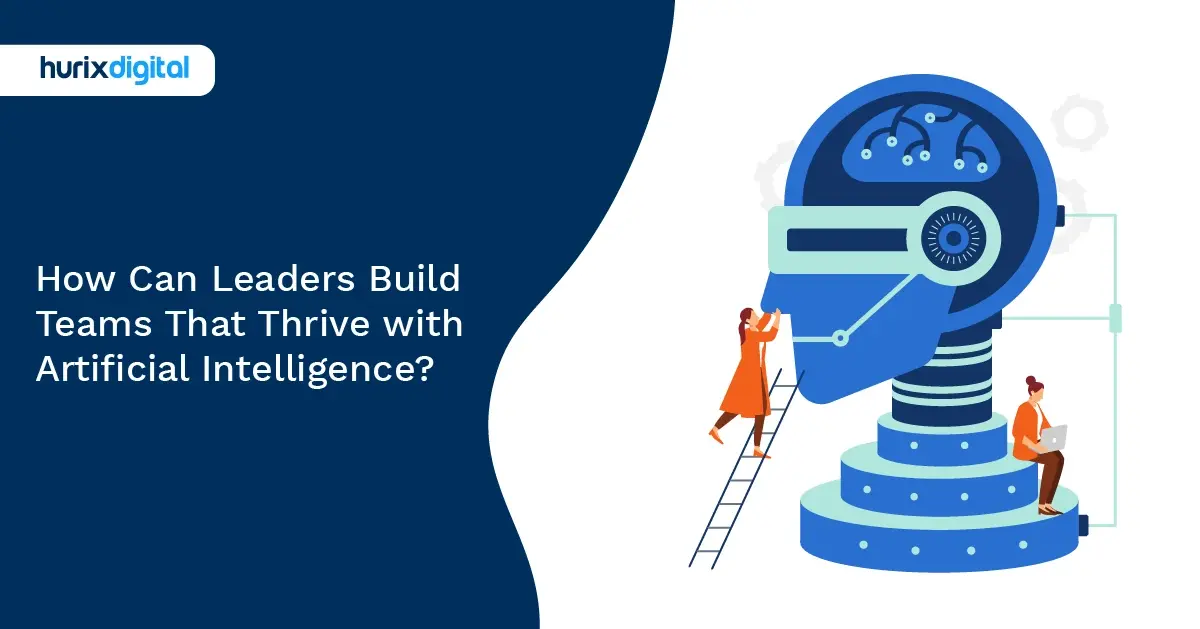
Future-Proof Your Data Strategy with Cloud Modernization
Summarize with:
The HashiCorp 2024 State of Cloud Strategy Survey highlights a critical issue: while organizations steadily increase their cloud investments, they need help managing those expenditures effectively.
The survey reported that 91% of respondents acknowledged that cloud waste remains a problem, slightly improving from 96% in 2023. The leading causes of this waste are consistent with previous years, including a lack of necessary skills, overprovisioning of resources, and idle or underutilized assets. Notably, skill shortages have emerged as a growing concern among 41% of the survey respondents.
These findings stress the importance of solid data management for CIOs in cloud environments. Effective data management can address these inefficiencies by ensuring that resources are optimally utilized, skills gaps are mitigated, and compliance and accessibility are maintained.
We know striking this balance can be challenging. Therefore, we present you with the best cloud modernization strategy for data management in the cloud.
Table of Contents:
- Cloud Modernization: Transforming Business for the Digital Era
- Your Guide to Cloud Data Management
- Important Strategic Drivers For Green Signaling Cloud Modernization
- Cloud Data Management Best Practices Checklist
- Way Forward
Cloud Modernization: Transforming Business for the Digital Era
Cloud modernization is the strategic process of updating legacy IT infrastructure, applications, and processes to leverage cloud technologies for greater agility, scalability, and innovation potential. It goes beyond simple “lift and shift” migrations to fundamentally reimagine how technology serves business objectives in a cloud-native world.
According to Gartner, by 2025, over 85% of organizations will embrace a cloud-first strategy and those who fail to adopt cloud modernization risk falling behind competitors in operational efficiency and innovation capacity.
The stakes are significant: IDC research reveals that companies with mature cloud strategies achieve 4.2x faster time-to-market for new products and 3.5x better ability to meet customer expectations than organizations stuck with legacy systems (IDC Cloud Outcomes Survey, 2023).
Cloud modernization isn’t just an IT initiative—it’s a business transformation strategy that enables organizations to:
- Rapidly adapt to changing market conditions
- Scale resources dynamically based on demand
- Implement advanced capabilities like AI/ML with less overhead
- Reduce technical debt while improving security posture
- Create a more resilient, future-proof technology foundation

Your Guide to Cloud Data Management
More than 94% of companies worldwide use cloud computing services to store and manage their business information. But the catch is that this widespread adoption comes with growing concerns about accessibility and compliance. These concerns must be carefully managed for efficiency and security in the cloud environment.
As a CIO, your job becomes tougher to stay compliant with your industry guidelines. At the same time, you have to implement cloud computing tools for efficiency and productivity. Here’s how to form a cloud modernization strategy for better cloud data management.
1. Know Where You Stand Today
In simpler terms, assess your business’s current state. An effective cloud data management strategy begins with a thorough data inventory and classification, identifying and categorizing all data types. This should include sensitive and critical information for proper handling and protection.
Next, a compliance gap analysis is essential to review existing measures against regulations like GDPR or HIPAA to identify areas for improvement. As a result, your business can prevent legal and financial risks.
Conducting an accessibility review allows organizations to evaluate how different stakeholders access data. The accessibility review will pinpoint bottlenecks or inefficiencies that may hinder productivity or compromise security.
2. Defining Objectives of the Cloud Modernization Strategy
Any cloud modernization strategy that aims to improve accessibility and compliance will have the following goals:
- Compliance Goals: Clear objectives for meeting regulatory requirements, data protection, and privacy standards. These can be industry-specific, like HIPAA for health management and telemedicine companies.
- Accessibility Goals: Goals for improving data accessibility so authorized users can easily access data without unnecessary barriers.
- Cost Management Goals: To improve cloud spend by reducing waste and maximizing the value of cloud investments.
3. Lay Down a Data Governance Framework
A solid data governance framework is crucial to securing compliance with cloud modernization. The framework should clearly define the roles and responsibilities for data ownership and access management and policies for data handling, such as data encryption, backup, and disaster recovery.
All these roles should be clearly defined to treat all data according to regulatory requirements and best practices. A well-defined governance structure helps maintain data integrity and security, which are critical for compliance and operational efficiency.
4. Optimize the Existing Cloud Infrastructure
Cloud data accessibility can only be achieved when businesses take the time to design a cloud architecture that aligns with their organization’s needs. This means they must choose the right mix of cloud services, whether IaaS, PaaS, or SaaS.
However, the work does not end here. Businesses utilizing cloud resources must ensure these services are configured to support expandability and adaptability.
Key considerations include:
- Minimizing overprovisioning, which leads to unnecessary costs.
- Making sure that resources are not idle or underutilized.
- Using cloud data accessibility tools like auto-scaling and rightsizing allows for dynamically adjusting resources based on actual demand.
5. Provide Skill Development Training to Employees
As the HashiCorp 2024 Survey revealed, a common barrier to successful cloud modernization is the need for more necessary skills within IT teams. To address this, organizations should invest in training programs focusing on the latest cloud technologies and best practices.
Training should cover cloud security, compliance requirements, and cloud accessibility solutions. Consequently, it will enable your teams to manage cloud environments more effectively.
We know it is a substantial investment, but it will reduce reliance on external expertise by building internal capacity to address challenges proactively.
6. Switch to Data Security and Compliance Automation
Implementing automated data security and compliance checks is the final step toward a successful cloud modernization strategy. Once again, cloud data accessibility tools that automatically encrypt data and generate audit logs can be used for audits.
Implementing automation allows CIOs to ensure that all compliance requirements are continuously met without manual oversight. As a result, the risk of human error would be greatly reduced, and the overall security posture of the cloud environment would strengthen.

Important Strategic Drivers For Green Signaling Cloud Modernization
Informatica, a renowned analytics report provider, recently surveyed the industry’s top data leaders and published the findings in its ‘State of Cloud Modernization Report 2024‘. Most respondents concurred that cloud modernization will be compulsory for thriving in the Artificial Intelligence (AI) era.
Almost 56% of leaders have already recommended that their organizations’ executive boards undertake modernization to improve efficiency, drive innovation, and usher in better scalability in cloud computing. Companies that are still indecisive can suffer from poor agility and an impaired ability to integrate with cloud-native platforms.
The broad reasons for undertaking cloud modernization are discussed below for reference.
1. Staying Innovative and Competitive
Businesses that wish to retain their competitive edge with more out-of-the-box IT-underpinned technological interventions need to embrace digital transformation with the cloud.
This will facilitate the streamlined adoption of cutting-edge technologies, such as Artificial Intelligence (AI), Machine Learning (ML), 5G, edge computing, advanced data analytics, etc. Further, cloud computing capabilities can be adequately upgraded only when modernized elements are incorporated into existing infrastructure.
Upgraded cloud architecture will empower businesses in:
- Optimizing critical operations
- Improving customer experiences
- Generating incisive insights into targeted niches and expertise areas
- Developing new services and products
- Taking data governance and maturity to the next level
- Promoting sustainability practices
The best modernization strategy will depend on the outcomes of the IT landscape assessment and the evaluation of business objectives in alignment with the long-term growth outlook.
2. Enhancing Cloud Security
More businesses will migrate to the cloud, necessitating modernizing the cloud for existing businesses so that they can benefit from stricter security standards like SOC 2, HIPAA, and GDPR.
Encryption and redundant data backup methods will grow in complexity. Only modernization will ensure that cybersecurity threats are proactively thwarted and service reliability is maintained. Enhanced cloud security will pave the way for business continuity and trust-building with consumers.
Cloud modernization will facilitate businesses to:
- Gain better visibility into cloud data access by third parties and others.
- Escape from collateral damage induced by malicious attacks aimed at other hosted services using a shared cloud environment.
- Better manage access points from different geolocations and devices with stricter implementation of BYOD (Bring-Your-Own-Device) policies.
- Avoid expensive compliance issues through better data privacy-related regulatory conformance in hybrid or public cloud deployments.
- Eliminate misconfigurations, inadvertent negligent actions of administrators, and other activities that can lead to security breaches.
- Strengthen identity management, reduce system vulnerabilities, and enhance the security of APIs and interfaces.
- Reinforce real-time detection of cloud threats and institute more intuitive remediation techniques.
3. Adopting Sophisticated Business Practices
Businesses aspiring to integrate advanced practices in their cloud-based workflow must opt for modernization. Almost 39% of businesses rely on cloud platforms to host more than half of their workloads.
Also, approximately 69% of businesses seek the services of more than one cloud service provider to run their activities smoothly. Businesses rely excessively on the cloud, and cloud modernization is compulsory to integrate sophistication in their strategic planning and data-driven decision-making processes.
Advanced business practices need a heightened level of security. As most businesses use more than one cloud service provider, they are confronted with the challenge of implementing security policies consistently across discrete platforms by navigating their complexities. New-age cloud-based security solutions can be implemented when cloud services are modernized. This will help businesses adopt advanced practices quickly.
4. Avoiding the Risk of Becoming Obsolete
Businesses that neglect cloud automation and modernization risk becoming obsolete. Their niche adversaries will be equipped with state-of-the-art cloud technologies, and legacy applications will not be able to compete with them.
Investment in new cloud deployment models would make businesses future-ready. If businesses are still deploying monolithic and sluggish cloud applications, they need to migrate to advanced cloud architectures for more scalability, agility, cost competitiveness, and speed.
5. Maintaining a Global Presence
Businesses with global footprints need to modernize the cloud to stay a step ahead of their peers. The remote servers in different data centers continuously undergo changes, which impact the functionalities of applications running on scalable virtual machines.
If the cloud is not modernized, businesses will not be able to benefit from properly pooling computing resources. Hence, utilization, scaling of infrastructure, and on-demand allocation of resources can become slower and efficient.
Lack of modernization will hamper the effective performance of IaaS, SaaS, and PaaS-like cloud service models. It will also make cloud data management more cumbersome, denting the flexibility of hybrid, private, and public models.
All these will affect the business’s global collaboration and accessibility. Low latency in cloud networking is mandatory for seamless global connectivity, which will also suffer without scalable and secure cloud resources.
Businesses with the modernized cloud can become more operationally efficient with CDNs (Content Delivery Networks), disaster recovery configurations, and multi-region deployment.
Cloud Data Management Best Practices Checklist
Take a quick look at cloud data management best practices for improved accessibility and compliance with industry standards:
- Conduct a thorough data inventory segregation to classify data by sensitivity and compliance needs.
- Establish clear data ownership, access policies, and lifecycle management practices.
- Implement encryption for data at rest and in transit, and use role-based access controls with multi-factor authentication.
- Perform regular compliance audits and use automated tools for continuous monitoring against regulations.
- Set up automated, regular backups with secure off-site storage and develop a tested disaster recovery plan.
- Monitor cloud resource usage to avoid overprovisioning and introduce cloud cost optimization strategies like rightsizing and reserved instances.
Way Forward
The strategic importance of cloud modernization cannot be overstated for businesses aspiring to scale new heights of success by optimizing resources, staying responsive to consumer needs, and becoming more cost-competitive. Modernization will help organizations unlock new value from AI, ML, and data-driven insight-providing applications. This will serve as the base for data excellence and continuous growth.
Hurix Digital prides itself on seasoned cloud professionals who leverage our state-of-the-art infrastructure to help businesses modernize their cloud applications, transition from legacy to cloud-based platforms, and enjoy formidable security in a multi-cloud environment. We empower businesses with improved flexibility, enhanced operational efficiency, quicker processes, and the ability to integrate with AI, ML, and other futuristic technologies.
Want to learn more? Connect with us to become future-ready.
Summarize with:

Vice President and Strategic Business Unit Head – Cloud Services
A top technology management voice on LinkedIn with 20 Years of experience in Information Technology, Cloud Services, Digital Transformation, Application Modernization, Managed Services, IT Security Engineering and Operations Management. An avid technology Leader, Leadership Speaker, Author & Coach.
 Upcoming Masterclass | Build an Army of Brand Evangelists using Training & Development | November 20th, 8:30 AM PDT | 11:30 AM EDT | 10:00 PM IST
Upcoming Masterclass | Build an Army of Brand Evangelists using Training & Development | November 20th, 8:30 AM PDT | 11:30 AM EDT | 10:00 PM IST




